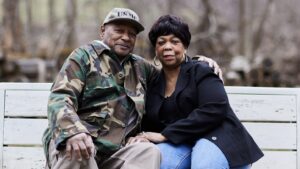When I first heard this argument from Palestinians 20 years ago, I rejected it. But the evidence is mounting before our eyes
The latest chapter in the Israel-Palestine conflict unfolded in many locations, all at once. In the Gaza Strip, civilian population centres were heavily bombarded by Israeli fighter planes and artillery, bringing death, injuries and massive damage to property. Towns in Israel were targeted by Palestinian rockets launched from Gaza; those that get past Israel’s Iron Dome missile-defence system also kill and destroy. In Jerusalem, settlers are attempting to forcibly displace Palestinians from their homes and worshippers have clashed with Israeli forces in one of the holiest sites for Judaism, Christianity and Islam.
In Israeli cities, the tension between Palestinians and Jews is rising. Anger and frustration from decades of dispossession, neglect and discrimination – coupled with images that for many represent the desecration of al-Aqsa – sparked eruptions of street violence by Palestinians, mostly from the margins of their society, against Jews.
On social media, Israeli Jews from the far right post hateful messages, not only against Palestinians living in Gaza, but also against those who are citizens of their country – inciting extreme violence, using racially charged language and organising for pogroms. The result of all this has been riots, horrifying violence and even lynchings by both sides. The Land of Israel – Eretz Israel-Palestine – is once again burning. In Gaza, Jerusalem, the West Bank, Acre, Jaffa and Lod.
Viewing Jewish-Palestinian relations in all of these places as one single issue is not the way many of us were taught to analyse the conflict. I received my political education in 1980s Jerusalem. At that time, Israeli progressives understood the conflict as having two distinct elements.
First, there was Israel “inside the green line” – the de facto border established in 1949. We believed this was a democracy – imperfect, in need of improvement, but democratic. Its citizenry included a Palestinian minority (about a fifth of the population) who suffered from institutional discrimination, but hey, there are plenty of democracies in which minorities suffer discrimination. While the injustice surely needed correction, the fact that members of this minority enjoyed political rights preserved Israel’s status as a democracy in our eyes.
The second part of the conflict was in the Palestinian territories that had been seized in the 1967 war and kept under a regime of military occupation – undemocratic by definition. We regarded the occupation of the Palestinian land as a temporary situation that did not point toward Israeli sovereignty – and we were fighting to end it sooner rather than later. Back in the 1980s, very few Israeli observers believed it was meant to last for ever.
Put together, these two elements provided a clear explanation of what was going on between the Jordan and the Mediterranean. One part was a democracy; the other part was under occupation. This two-tiered paradigm became the lens through which we understood and analysed the situation we were living in.
But as the years went by, this lens turned out to produce a rather limited view – to the point of distorting the picture. This understanding seeped slowly but steadily through to Israeli activists who were exposed to the reality of Israel’s colossal colonisation project in the West Bank, which consists of more than 250 settlements – a massive landgrab with its own road and infrastructure networks, served by a separate legal system. This looked anything but a temporary regime.
This understanding grew along with the recognition that Israeli policies in the occupied territories stifle Palestinian development and divert all the resources of the occupied land to Jewish settlers at the expense of Palestinian subjects. These practices could not be explained through the lens of “occupation”. The international laws governing occupations – which prohibit any transfer of civilians from the occupying state to the occupied territory – lacked the language to frame a reality where the physical and legal spaces are divided, along national lines, by the governing principle of Jewish supremacy and Palestinian subjugation. It is occupation, obviously, but not only occupation.
At the same time, political insights we tried to repress chipped away at the ethos on which we were raised, forcing us to admit that the recognition of Israel as a democracy obscures and conceals key features of its governmental personality – features that have always been there, but have intensified in the last decade. The constant incitement against Israel’s Palestinian citizens, which under Benjamin Netanyahu reached unprecedented levels; the vitiation of their political power through the vilification and delegitimisation of their elected representatives; the deeply ingrained, systemic institutional discrimination; the nation-state law that constitutionally cemented their collective inferiority; and the drift towards Putinist authoritarianism, with its hallmark persecution of government critics. Does that sound like a democracy?
In July 2020, the Israeli human rights organisation Yesh Din, which for the last 16 years has been investigating violations of Palestinian rights by settlers and security forces, published a legal report that I authored. It concluded that the West Bank was governed by a regime of domination and oppression by Israeli Jews over Palestinians, and that it carried out inhuman acts designed to perpetuate this state of affairs. In other words, the report concluded that Israelis were committing the crime of apartheid, considered a crime against humanity under international law, in the West Bank.
In January, the Israeli human rights group B’Tselem published a position paper asserting that throughout the area between the Jordan and the Mediterranean – including inside Israel – the policy of the state was intended to advance and maintain Jewish supremacy. That is, this is a reality in which the guiding principle of the government is the promotion of Jewish interests, power and wellbeing, which is achieved by providing preference to Jews in resources and legal rights. For B’Tselem, there is only one regime, and it is an apartheid regime.
In late April, Human Rights Watch published an in-depth report supporting the claim that the Israeli authorities “methodically privilege Jewish Israelis and discriminate against Palestinians” in the entire area, though it found that only in the occupied territories was it accompanied by inhuman acts that together amounted to the crime of apartheid. While there are nuances and differences between them, the three reports had a common theme: Israel is advancing Jewish supremacy. This is a phrase that is starting to be heard more often among Israeli progressives – a phrase that was used previously only to describe the ideology of extremist settler groups, but which is now employed to describe the policies of the Israeli government.
This discourse joins a conversation that Palestinian intellectuals and rights groups have been having for decades, and charges they made long before we did. When I first heard this argument 20 years ago, I strongly opposed it. The lens that saw the conflict in two parts, a democracy and an occupation, helped to dismantle the charge of apartheid. Israel was committed to liberal democracy even if it did not live up to it in practice, and the occupation, well, it was temporary. But now, with the evidence mounting before my eyes, I can no longer deny the blatant apartheid in the West Bank and the relevance of the accusations about efforts to maintain Jewish supremacy in Israel proper as well.
The new images and videos of the conflict, visible on my mobile stream, provide no context. They show criminals and victims, and that’s it. They come and go at TikTok pace. It is impossible to extract a political thesis out of them. In the Israeli media, Jews have a history but Palestinians have only a biography, if that. That is why the torching of a synagogue and despicable attacks on Jews by Palestinian thugs in Lod invoke references to national traumas like Kristallnacht or the 1929 massacre of Jews in Hebron, but when the victims are Palestinians, their names barely get a mention in the papers. The context Israeli discourse obscures and hides must be pulled out of the shadows; otherwise, we will never fix the place we live in, nor will we ever be freed of the sense of victimhood in whose name we are victimising millions.
Israel’s progressive camp is in the midst of updating its frame of reference for the conflict. Admittedly, it is a small group, even among those to the left of Israel’s increasingly right-leaning mainstream. But given that the progressive camp is the main ideological alternative to the prevailing political current – and given the credibility that Israeli human rights groups enjoy around the world – it is influential beyond its size.
The updated paradigm provides a comprehensive analysis to understand the situation in Gaza, the West Bank and Israel – using a lens that reveals an Israeli ethnocracy. Our upgraded lexicon reduces the gap between the racialised reality and its political description, and therefore makes the forging of a shared Palestinian-Israeli vision possible – a vision that respects the national aspirations of both peoples, and guarantees equal rights to everyone living in the land. This new model is critical – but only moral and political integrity will make it possible.
Michael Sfard is an Israeli human rights lawyer




